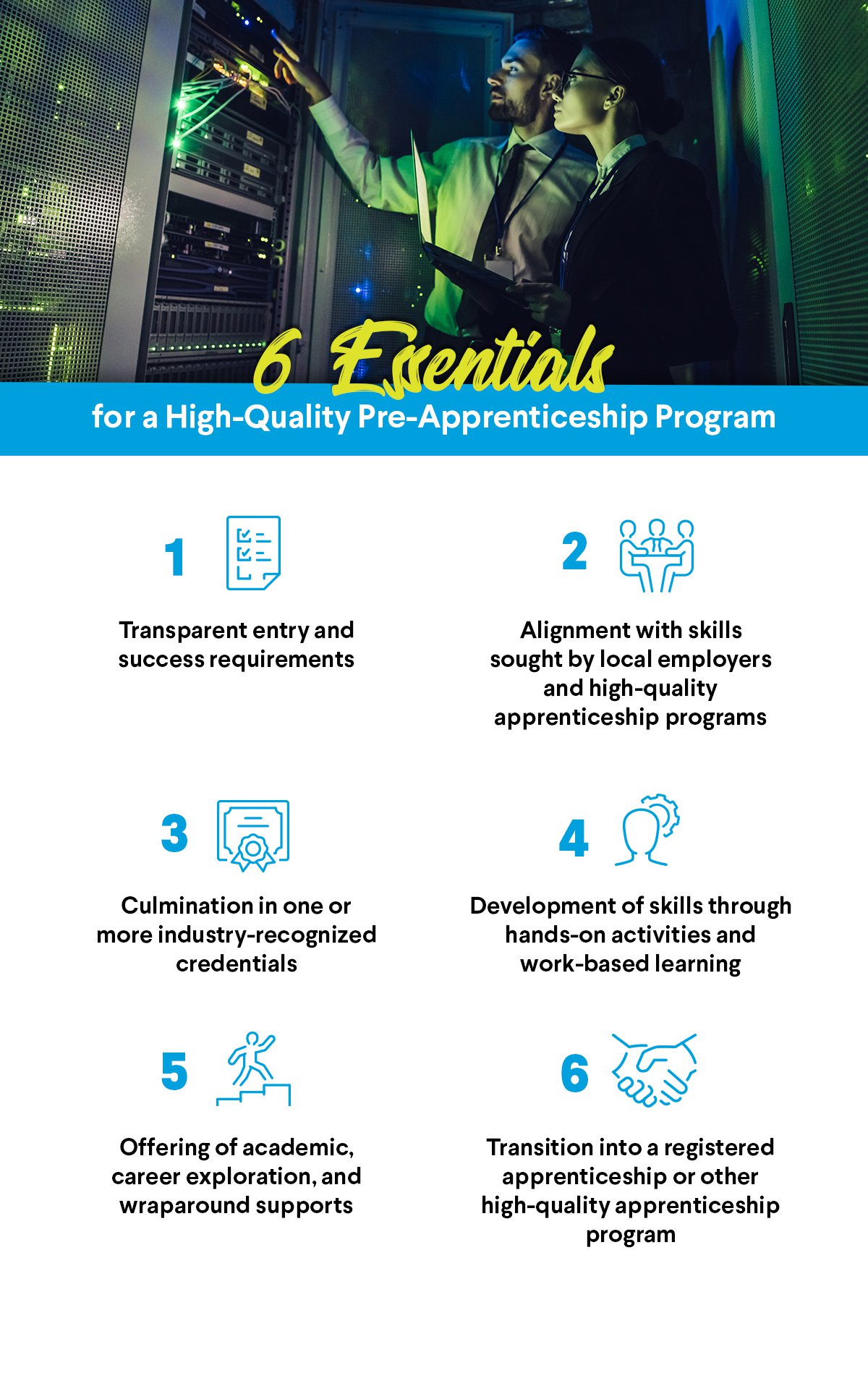IT is a large, dynamic, and rapidly growing sector of the U.S. economy, one in which creativity and flexibility are prized and rewarded with high wages and skills that will yield longevity in careers as the workforce becomes increasingly tech driven. However, the highly skilled nature of these jobs, combined with employer preferences for postsecondary credentials and the challenges of navigating the volume of occupations and career pathways across industries, have limited access to entry-level IT positions for many workers including those without advanced degrees or previous experience in the IT sector. To varying levels of success, programs from boot camps, to postsecondary certificate programs, to community-based training have emerged to build new on-ramps into IT.
Pre-apprenticeship programs are one such on-ramp model that can be particularly beneficial to the IT sector. Employers are in search of a skilled workforce that is able to effectively communicate, problem-solve, and adapt quickly on the job. As a result, many are increasingly turning to apprenticeship and Registered Apprenticeship as talent development solutions. Registered Apprenticeships, often considered the gold standard of apprenticeship training, are workforce training models that combine paid on-the-job learning and classroom or online instruction to help a worker master the knowledge, skills, and competencies needed for career success, while helping employers develop talented workers. They are formally approved by either the U.S. Department of Labor’s Office of Apprenticeship or a state apprenticeship agency. Pre-apprenticeship programs can provide a feeder into these highly skilled training opportunities, and attract and prepare a broader and more diverse labor force to the industry.
The purpose of this framework is to offer guidance to community-based organizations, training providers, employers, and other practitioners interested in developing a quality pre-apprenticeship program that is aligned with the specific needs of the IT industry and that advances equity in the workforce. It adapts the quality elements of JFF’s Framework for a High-Quality Pre-Apprenticeship Program and provides IT-specific recommendations. These elements include:
- transparent entry and success requirements;
- alignment of skill development with local employer and apprenticeship demand;
- provision of industry-recognized credentials;
- development of skills through work-based learning;
- inclusion of academic and career exploration, as well as wraparound supports; and
- connections and transition into a Registered Apprenticeship.
This resource also spotlights several high-performing IT training programs. While not all of these are formal pre-apprenticeship programs, the best practices highlighted demonstrate the value and impact of incorporating pre-apprenticeship elements into overall program and training design.
It is important to note that there is a critical need to advance racial and social equity in our national systems, including workforce development. While elements of this framework can help programs support underserved populations and expand access to IT careers, pre-apprenticeships should ensure that they apply a strong lens of racial and social equity to all facets of their program design and training structure. Making this approach a core component of employer partnerships and embedding it into the provision of supportive wraparound services will help pre-apprenticeships increase access to career pathways for a more diverse worker population. Practitioners should also integrate their own best practices and understanding of how to do this in meaningful and effective ways that take into consideration the unique needs of the populations and communities they are serving.






